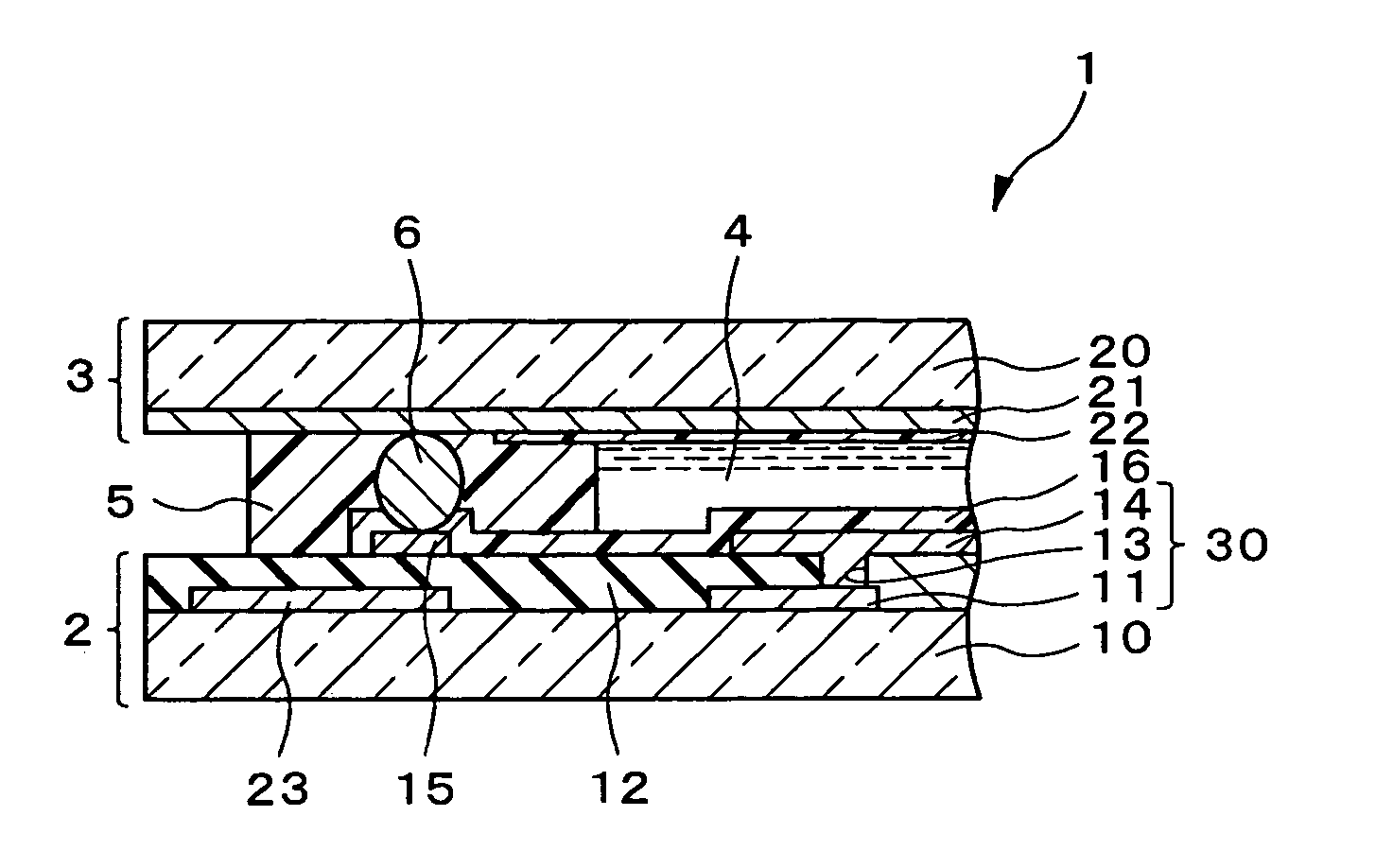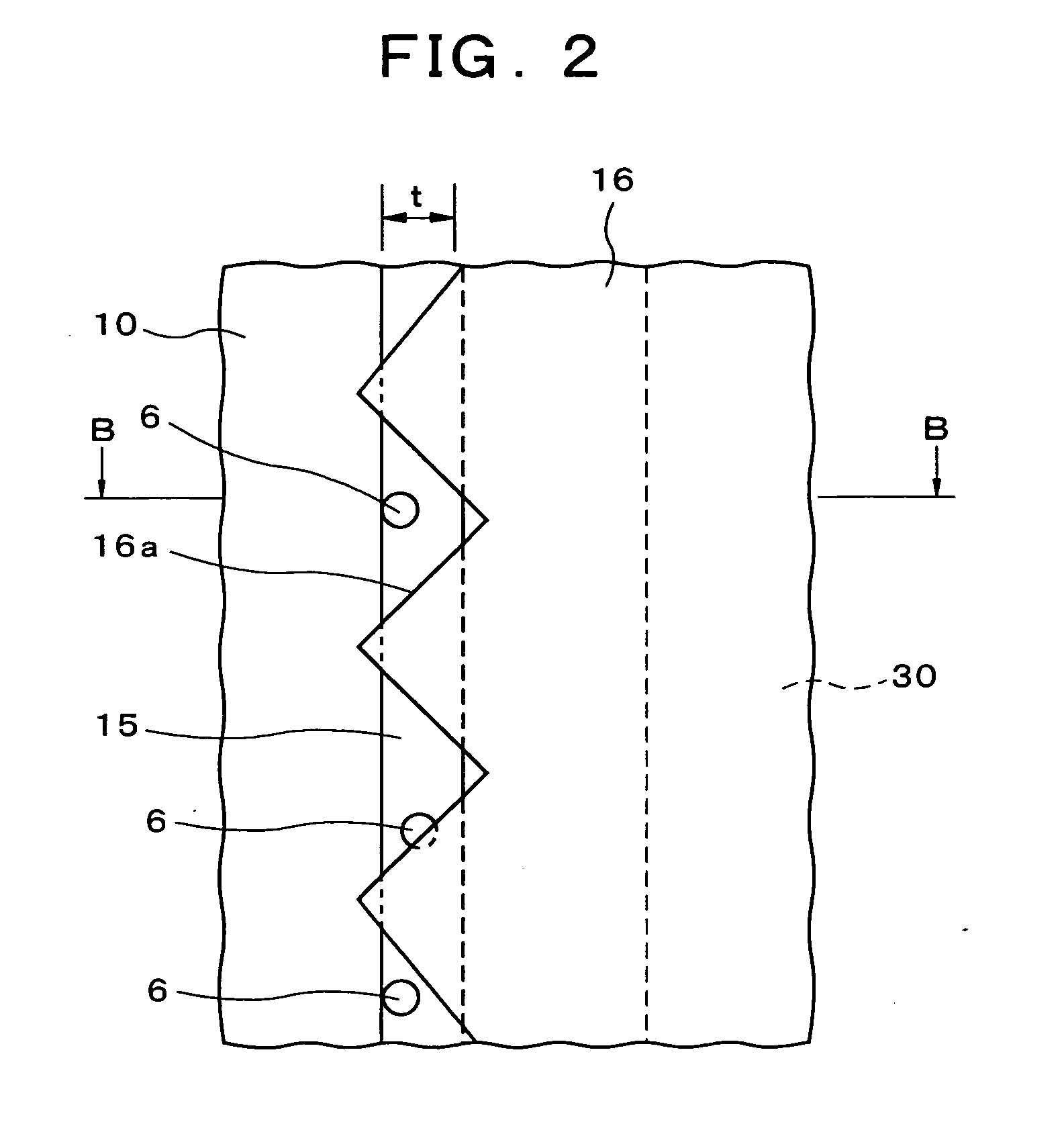Liquid crystal display device and method for manufacturing the same
- Summary
- Abstract
- Description
- Claims
- Application Information
AI Technical Summary
Benefits of technology
Problems solved by technology
Method used
Image
Examples
first embodiment
[0058] Liquid crystal display devices constituting embodiments of the present invention will be described in concrete terms below with reference to the attached figures. First, the liquid crystal display device of the present invention will be described. FIG. 1 is a plan view showing the TFT substrate of the liquid crystal display device of the present embodiment, and FIG. 2 is an enlarged view of the same. Furthermore, FIG. 3 is a sectional view showing the electrically conducting parts of the liquid crystal display device of the present embodiment, and corresponds to a sectional view along line B-B in FIG. 2. In order to facilitate viewing of the figures, the insulating layer is omitted from FIG. 1, and only the conductive particles 6, transparent electrode 10, transfer electrode 15, alignment film 16, and pixel array 30 are shown in FIG. 2. As is shown in FIGS. 1 through 3, the liquid crystal display device 1 of the present embodiment is constructed as follows. The TFT substrate ...
second embodiment
[0078] Next, a liquid crystal display device constituting the present invention will be described. FIG. 9 is an enlarged plan view showing the TFT substrate of the liquid crystal display device of the present embodiment. Furthermore, in FIG. 9, constituent elements that are the same as those of the TFT substrate 2 shown in FIG. 2 are labeled with the same reference numerals, and a detailed description of such constituent members is omitted. Furthermore, in FIG. 9, in order to facilitate viewing of the figure, only the conductive particles 6, transparent substrate 10, transfer electrode 55, alignment film 16, and pixel array 30 are shown. In the liquid crystal display device of the present embodiment, as is shown in FIG. 9, a plurality of transfer electrodes 55 are formed locally, and the alignment film 16 is formed so as to avoid the transfer electrodes 55. Specifically, the transfer electrodes 55 are formed in the area of the cut-out part 16a of the alignment film 16. In this liqui...
PUM
 Login to View More
Login to View More Abstract
Description
Claims
Application Information
 Login to View More
Login to View More - R&D
- Intellectual Property
- Life Sciences
- Materials
- Tech Scout
- Unparalleled Data Quality
- Higher Quality Content
- 60% Fewer Hallucinations
Browse by: Latest US Patents, China's latest patents, Technical Efficacy Thesaurus, Application Domain, Technology Topic, Popular Technical Reports.
© 2025 PatSnap. All rights reserved.Legal|Privacy policy|Modern Slavery Act Transparency Statement|Sitemap|About US| Contact US: help@patsnap.com



